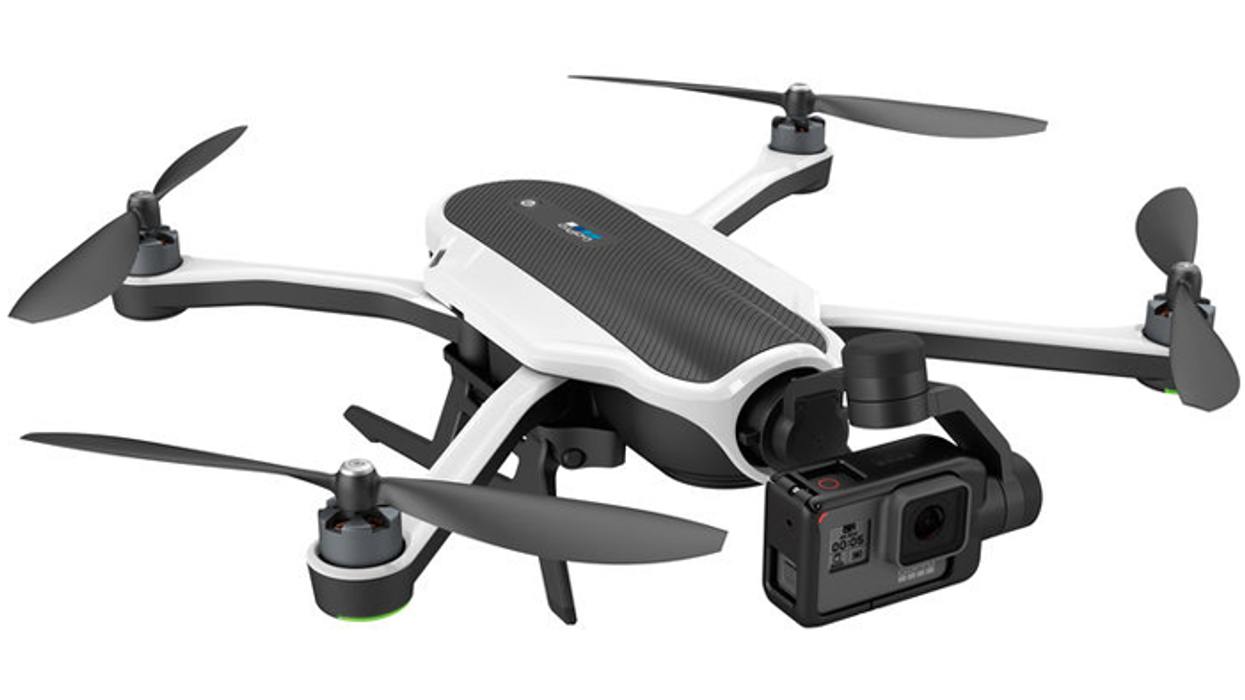GoPro is Officially Done With Drones
Once the remaining Karma inventory is gone, GoPro will leave the drone market.

2017 was a rough year for GoPro. Its big product, the Hero6, didn't perform nearly as well as the action camera company expected, even after a rather sizeable price drop from $499 to $399. In a press release which dropped earlier this morning, the full repercussions were detailed.
While the company will undergo some major restructuring (reducing its global workforce from 1,254 employees to fewer than 1,000 employees worldwide), the major bombshell was that they would no longer be pursuing a stake in the drone industry. Not only will they halt production of their flagship Karma drone, they will be exiting the competition entirely.
"Although Karma reached the #2 market position in its price band in 2017, the product faces margin challenges in an extremely competitive aerial market," the newsletter explained, "and furthermore, a hostile regulatory environment in Europe and the United States will likely reduce the total addressable market in the years ahead. These factors make the aerial market untenable and GoPro will exit the market after selling its remaining Karma inventory. GoPro will continue to provide service and support to Karma customers."
The $799 Karma drone had a short-lived, and ultimately troublesome, lifespan. The product was first released on October 23, 2016 and was recalled less than three weeks later due to safety concerns. At the time of the recall, approximately 2,500 units had been sold. The company decided to issue the recall because a small number of drones reportedly "lost power during operation" for unknown reasons. Essentially, their drones were falling out of the sky.

As Charles Haine reported back at the time of the recall, this is (quite obviously) not an ideal problem for a drone to have. "As has been proven in the past, drones have the potential be dangerous and need to be treated with respect," he writes. "In the hands of an experienced operator amazing shots can be created, but reliable equipment is just as important as a safety-conscious operator, since a drone that acts erratically or falls from the sky unpredictably can cause real damage to both people and property. The best case scenario for a drone losing power while in the middle of flight is that it crashes to the ground and is destroyed, but there are obviously much worse situations where it could crash into a person and cause injury."
GoPro attributed the issue to a faulty battery latch which experts speculate allowed the batteries to become loose and cause power failures.
In response, GoPro not only provided a full refund for the Karma but went ahead and sent a free GoPro Hero5 to anyone who purchased the drone as a sort of mea culpa. That was a pretty sweet $400 deal. The Karma then went through a re-release of sorts in the Spring of 2017. The company attributed the issue to a faulty battery latch which experts speculate allowed the batteries to become loose and cause power failures. A press release at the time read, "To clarify, this Karma is the same Karma that launched last year—to the naked eye. If you break the construction down, you’d see that we’ve redesigned the battery latch. A small change that led to a huge improvement. "
As a result of the failed Karma drone, GoPro lost $373 million in revenue in 2016. With DJI holding a clear lead in the drone market, this seems like an unfortunate but smart decision for GoPro.












